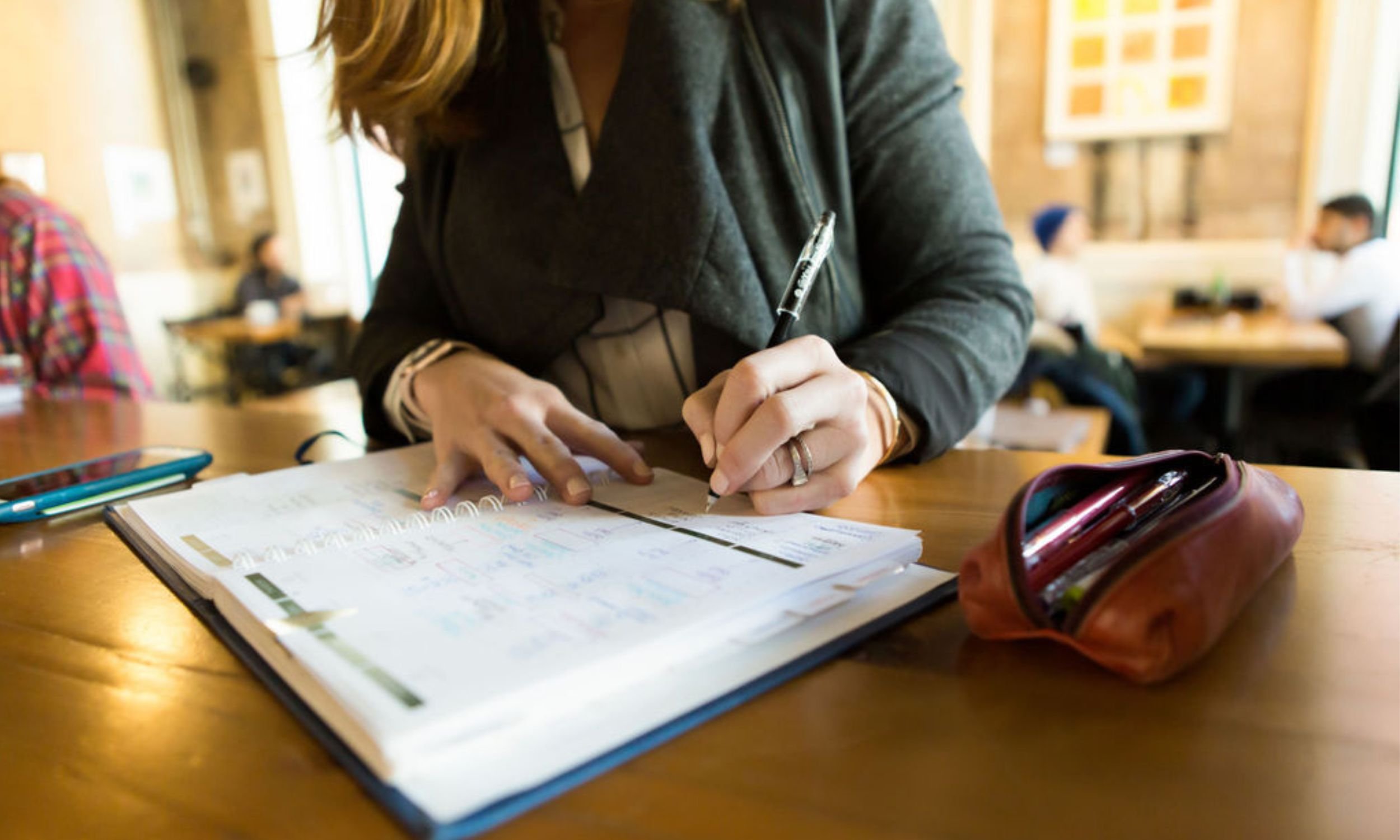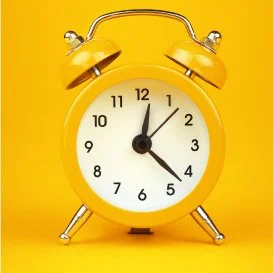My 10 favorite things about using a planner
I’m a planning junkie. I love planning my day, my week, my month, my year- hell, I like to plan my decade. It is one of my favorite things I do each Sunday afternoon because it has been such a powerful tool in my life. But, when you have ADHD, planning can seem daunting- so many people with ADHD could start a library with all the planners they own with only 2 weeks filled out.
I know that. I hear and see the struggles every day. But, I keep on working with my clients on it- why? Because once the planning routine is adopted- it can be transformative. Here’s why:
1. Using a planner saves executive functioning energy
This is by far the biggest reason to use a planner with ADHD. When you have ADHD, you have a limited supply of executive functioning energy so you want to make sure you don’t waste a drop. Every time you stop a task, then think about what the next thing is you are going to do, plan that next task and start it- you have used up 4 different stores of that precious executive functioning energy. When you plan ahead of time, however, you batch that executive functioning heavy task at the beginning. This saves your valuable resources and leaves you with more executive functioning energy to spend throughout your day- when you really need it- like focusing on that big project you have due tomorrow.
2. It allows you to set aside time for the good stuff- family, friends, passions, etc.
I feel extremely lucky. I love my work and I feel passionate about it. But it is not my only passion and it is not the only thing that fuels me and fills me with joy. So I plan my entire day- from when I wake until when I sleep. I want to make sure that I am planning, holding myself accountable, and creating time to spend with my family, my friends, myself and my other passions.
3. A planner helps you find balance
I know I look like a 5 year old starting a coloring project but I use 5 different colored erasable pens when I plan my day: purple for me, pink for clients, blue for writing, green for family and orange for my relationship. This way, when I look at my week, I know if I am planning to spend my time in a way that feels balanced and even. Some days and weeks are a lovely balance of all of my colors- each day has some of each and throughout the week I have at least 1 or 2 big chunks of time that are just one color (this allows deep focus for that one area of my life). Other weeks, it’s a bit out of whack- but that is okay- the color coding gives me a warning and then I know when I need to warn my family or myself that I just need to get through a day or two until the balance returns.
4. Planners give a sense of control over your time and your life
When I look at my week and I see balance as well as time to get done the things that I want to get done, it feels good- really good. It gives me a sense of calm and control. I hear myself say “Ive got this.” Even on those weeks when it is not in balance or when my to do list is too long and there is no chance that I am getting the things done that I want to get done, the planner is still calming- it allows me to prioritize the most important things, find some acceptance with that plan and then enact it, rather than second guessing every step along the way.
5. Planning helps you understand how long things take
The ADHD brain can struggle to know how long something will take. It doesn’t have many “known times” (established timings for repeated tasks) in its storage bank. Regular use of a planner builds up a list of “known times” because it acts as a time prediction test each day. I think about how long I think something will take, I then plan for that, I do the thing and I can see if I am right. I am not doing this with this intention, specifically, but it has that effect and therefore builds that known time storage bank.
6. Planning helps you create a regular sleep schedule
If I don’t get enough sleep Im a nightmare. Im cranky, irritable, cant focus and cry at the drop of a hat. Nothing gets done and I feel bad about myself (and lets face it- other people don’t feel that great about me either). So sleep is my absolute, number 1 priority. I know my kids get up at 6:45 every morning. Without fail. So I need to be ready to go to sleep (not just to bed) at 10:45. Planning helps me do that. It helps me work backwards from that time. If Im going to fall asleep at 10:45, then I need to be in bed at 10, so I need to start my wind-down routine around 9. That is one of the first things that I put in my planner so that I can work up against that time- realistically estimating how much time I have in my evening and then planning my tasks and activities appropriately.
7. Knowing how much time you actually have helps you set boundaries and say no
When I look at my planner for this week I see I have 12 hours of “free time.” That is time that is child-free, client-free and not otherwise spoken for. 5 of those 12 hours are after 7pm and therefore not my best focus time (but good creative time). So that leaves me with 7 focus hours. My priorities for the week are to write 2 articles, 1 report and book our travel plans for the next 6 months. Can I do it? Yes. Will it be tight? Yes. Can I take anything else on? No. There are some weeks that I have more wiggle room and so maybe I will volunteer at my son’s school or agree to meet a friend for lunch or run those extra errands. But this week is not that week. If I didn’t map that all out I would say yes to all of those things. Because I want to do all of those things- they are important to me and appealing. But my planner is clear- there is not time this week.
8. Planners ease anxiety
Using my planner allows me to relax and know that things are accounted for- even if I cant get to them all right now, I know I have a plan to do so. Also, when you plan, it has the side effect of increasing your accountability and dependability. This also allows you to relax because you start to realize you can count on yourself to show up/ do what you need to do/ remember the thing you need to remember, etc.
9. Planners provide more space in your working memory for other things
When you hold everything in your head- your to do list (or action list), your appointments, your priorities for the day and your routines your brain have to keep circling to keep that information in your working memory (where we hold active information before we store it away). The ADHD brain loses track of things when they are out of sight (like information stored in long term memory is) and therefore if something is important it often tries to keep it in active memory when it can be present and active. In order to do that though it has to constantly revisit those things in order to make sure they are not forgotten. Its like trying to remember a phone number (back when you had to do that sort of thing)- you need to repeat it over and over in order to assure that it does not leave your brain. Planning your day, your priorities and your action list lets your brain release all that information and stop circling. This allows more space for other things to fill up your working memory, like what the person in front of you is saying and what you want to ask them.
10. Planners provide a space to think through the details that can make or break an intention.
It’s the details that so often throw off a plan or a day. The forgotten gym clothes, the missing lunch, the too-short travel time, etc. These are the details that keep you from being able to accomplish what you set out to. When you plan your day ahead of time, you have a workspace to figure those things out. Are you going to the gym tomorrow morning, showering there, and heading to work right from there? You will need to pack a bag of work clothes, toiletries as well as layout your clothes for the gym tonight. Have a meeting 30 minutes away? You are going to need to build that buffer into your plan in order to get there on time. Without the scratchpad of the planner, it can be very hard to remember those details when you need to.
Planners, when properly executed are powerful tools and a crucial building block to managing ADHD symptoms. Ever wonder how to best use a planner? Don’t miss my 3-step process to perfect planning!
Ready to shift from
meltdown to mastery?
This online course has been designed specifically to help teach the strategies ADHD brains need to help them move from overwhelm and meltdowns to confident emotional mastery.
Want to know more about
thriving with ADHD?
Check out these other articles:










Top ADHD Tools & Tips for Thriving at Work: Advocating for Accommodations (even if you don’t disclose)